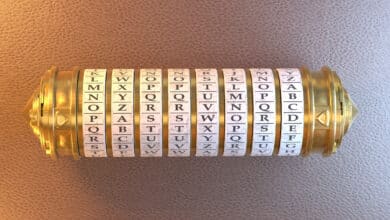All Post-Quantum, PQC Posts
-
Post-Quantum, PQC, Quantum Security
Capability D.2: Decoder Performance (Real‑Time Error Correction Processing)
In a fault-tolerant quantum computer, qubits are continuously monitored via stabilizer measurements (producing “syndrome” bits) to detect errors. The decoder is a classical algorithm (running on specialized hardware) that takes this rapid stream of syndrome data and figures out which qubits have experienced errors, so that corrections can be applied immediately. Achieving real-time decoding at scale is enormously challenging: a CRQC may need to handle…
Read More » -
Post-Quantum, PQC, Quantum Security
Capability C.2: Magic State Production & Injection (Non-Clifford Gates)
Magic states are an essential “extra ingredient” for universal quantum computing, often metaphorically likened to a magic catalyst enabling otherwise impossible operations. Quantum algorithms require not only robust qubits and error correction, but also a way to perform non-Clifford gates - operations outside the easy Clifford group. These non-Clifford gates (like the T gate or controlled-controlled-Z) are the key to achieving universal quantum computation, yet…
Read More » -
Post-Quantum, PQC, Quantum Security
Capability C.1: High-Fidelity Logical Clifford Gates
Cryptographically Relevant Quantum Computers (CRQCs) will rely on a suite of core capabilities - and high-fidelity logical Clifford gates are among the most essential. This capability refers to performing the fundamental set of quantum logic operations (the Clifford gates: Pauli X, Y, Z flips; the Hadamard (H); the phase gate (S); and the controlled-NOT (CNOT), among others) on logical qubits with speed and reliability. In…
Read More » -
Post-Quantum, PQC, Quantum Security
Capability B.3: Below-Threshold Operation & Scaling
“Below-threshold operation” refers to running a quantum processor at error rates below the critical threshold of a quantum error-correcting code. In simple terms, there is a tipping point in error rates: if each quantum gate and qubit has an error probability lower than this threshold, adding more qubits and more error-correction actually reduces the overall error rate of the computation. If error rates are above…
Read More » -
Post-Quantum, PQC, Quantum Security
Capability B.2: Syndrome Extraction (Error Syndrome Measurement)
Quantum syndrome extraction - also called error syndrome measurement - is the process of measuring collective properties of qubits to detect errors without destroying the encoded quantum information. It is essentially the sensor mechanism of a quantum error-correcting code, analogous to measuring parity checks in a classical error-correcting code. In a stabilizer code (the leading framework for quantum error correction, introduced by Gottesman in the…
Read More » -
Post-Quantum, PQC, Quantum Security
Capability B.1: Quantum Error Correction (QEC)
Quantum Error Correction (QEC) is the first and arguably most critical capability in the roadmap toward a cryptographically relevant quantum computer (CRQC). Without QEC, a large-scale quantum computer cannot reliably perform the billions of operations needed to break modern encryption - no matter how many qubits we build. In essence, QEC is what allows many noisy physical qubits to behave like a single near-perfect qubit.…
Read More » -
Post-Quantum, PQC, Quantum Security
Shor’s Algorithm: A Quantum Threat to Modern Cryptography
Shor’s Algorithm is more than just a theoretical curiosity – it’s a wake-up call for the security community. By understanding its principles and implications, we can appreciate why the cryptographic landscape must evolve. The goal of this guide is to equip you with that understanding, without delving into complex mathematics, so you can make informed decisions about protecting your organization’s data against the quantum threat.
Read More » -
Post-Quantum, PQC, Quantum Security
Grover’s Algorithm and Its Impact on Cybersecurity
Grover’s algorithm was one of the first demonstrations of quantum advantage on a general problem. It highlighted how quantum phenomena like superposition and interference can be harnessed to outperform classical brute force search. Grover’s is often described as looking for “a needle in a haystack” using quantum mechanics.
Read More »







